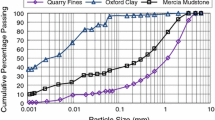Abstract
The fabric detergency performance of systems containing different types of surfactants and several builders of reduced phosphate content has been compared using a radiolabeled sebum-clay soil. Use of this soil allows quantitative measurement of both sebum and clay removal from soiled swatches, generally cotton and permanent press Dacron-cotton. One study compared alkylbenzene sulfonate (LAS), alcohol sulfate (AS), alcohol ethoxysulfate (AEOS) and alcohol ethoxylate (AEO) as surfactants in formulations containing from 0–45% sodium tripolyphosphate (STPP). Especially under hard water conditions, the AEO and AEOS considerably out-perform the LAS and AS at equal use concentrations and are less sensitive to phosphate reduction. Tests with cotton swatches soiled with five different carbon black-oil mixtures generally rank the surfactants in the same order, although individual responses of the cloths vary considerably. A further study compares the effect of replacing STPP with sodium nitrilotriacetate (NTA) in formulations containing varying amounts of AEO or LAS. Detergency improves significantly with increasing surfactant concentration, particularly with AEO, and declines as builder strength is reduced. AEO exceeds LAS considerably in performance under the test conditions even at relatively high concentrations of LAS. Another study compares the performance of AEO and LAS at equal concentrations in formulations containing a variety of builders. AEO is generally superior to LAS in removing both sebum and clay soils and is less sensitive to builders and water hardness. The builders generally rank in this order: STPP > NTA = citrate > carbonate > sulfate.
Similar content being viewed by others
References
Lamberti, V., Canada Patent 853,647, Oct. 13, 1970.
Weil, I., British Patent 1,151,392, Aug. 7, 1969.
Diehl, F.L., U.S. Patent 3,308,067, March 7, 1967.
Wilham, C.A., T.A. McGuire, A.M. Mark and C.L. Mehltretter, JAOCS 47:522 (1970).
Langguth, R.P., Detergents and Specialties 1970(11):28.
Pitts, P.M., Deterg. Age 5(2):20 (1968).
Bistline, R.G., Jr., and A.J. Stirton, JAOCS 48:74 (1971).
Katstra, R.D., Soap Chem. Spec. 1971(2):36.
Gordon, B.E., and W.T. Shebs, JAOCS 46:537 (1969).
Illman, J.C., G.M. Hartwig and J.W. Roddewig, Ibid. 46:70 (1969).
Shebs, W.T., and B.E. Gordon, Ibid. 45:377 (1968).
Illman, J.C., B.M. Finger, W.T. Shebs and T.B. Albin, Ibid. 47:379 (1970).
Author information
Authors and Affiliations
About this article
Cite this article
Illman, J.C., Albin, T.B. & Stupel, H. Studies on replacement of phosphate builders in laundry detergents using radiolabeled soils. J Am Oil Chem Soc 49, 217–221 (1972). https://doi.org/10.1007/BF02582581
Received:
Issue Date:
DOI: https://doi.org/10.1007/BF02582581




